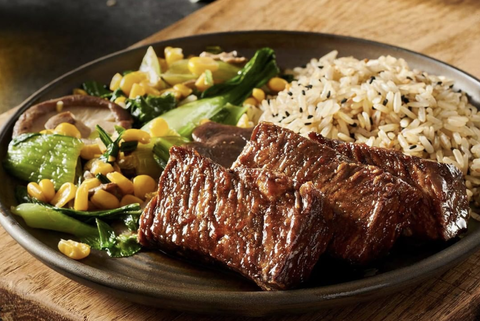Keeping Foods Hot
go.ncsu.edu/readext?811031
en Español / em Português
El inglés es el idioma de control de esta página. En la medida en que haya algún conflicto entre la traducción al inglés y la traducción, el inglés prevalece.
Al hacer clic en el enlace de traducción se activa un servicio de traducción gratuito para convertir la página al español. Al igual que con cualquier traducción por Internet, la conversión no es sensible al contexto y puede que no traduzca el texto en su significado original. NC State Extension no garantiza la exactitud del texto traducido. Por favor, tenga en cuenta que algunas aplicaciones y/o servicios pueden no funcionar como se espera cuando se traducen.
Português
Inglês é o idioma de controle desta página. Na medida que haja algum conflito entre o texto original em Inglês e a tradução, o Inglês prevalece.
Ao clicar no link de tradução, um serviço gratuito de tradução será ativado para converter a página para o Português. Como em qualquer tradução pela internet, a conversão não é sensivel ao contexto e pode não ocorrer a tradução para o significado orginal. O serviço de Extensão da Carolina do Norte (NC State Extension) não garante a exatidão do texto traduzido. Por favor, observe que algumas funções ou serviços podem não funcionar como esperado após a tradução.
English
English is the controlling language of this page. To the extent there is any conflict between the English text and the translation, English controls.
Clicking on the translation link activates a free translation service to convert the page to Spanish. As with any Internet translation, the conversion is not context-sensitive and may not translate the text to its original meaning. NC State Extension does not guarantee the accuracy of the translated text. Please note that some applications and/or services may not function as expected when translated.
Collapse ▲It’s your night to make dinner and you are trying to get everything ready and make sure it’s all still hot, the story of most of our lives. This makes me think of my days in undergrad and Meal Management 101. Yes, I actually had to take a class in meal prep and planning. It was super fun, and we learned all the ins and outs of making sure our meals were well-planned out and all items were ready at about the same time. So if this is something that you struggle with, keep reading for some tips that will assist you from beginning to end.
- Tip 1 – Have a good idea of how long each thing you are making takes overall and how long the major steps will take. For example: chopping vegetables, boiling water, and preheating an oven can all take longer than you think.
- Tip 2 – Begin cooking the item or items that take the longest first. Let’s say that you are roasting a whole chicken, which will take about 90 minutes or so. That’s most of the cooking time. Also, remember that meat is better once it sits a bit; it allows everything to relax and redistributes the juices before carving.
- Tip 3 – Potatoes and other root vegetables retain heat very well, so you have about 10 minutes of leeway after they are done cooking before they start to get cold. Additionally, rice is also better if it sits for 10-20 minutes.
If you’re preparing several foods that get “done” at different times, you can successfully hold most hot foods for about 15 to 20 minutes in a preheated oven set to 200 to 250°F. For longer than this, check frequently with a food thermometer to assure the food is remaining at a temperature of 140°F or above. If necessary, adjust the oven’s temperature to a higher setting. Keeping foods hot for extended periods (more than a couple of hours) may reduce the quality of the food.
Examples of ways to keep foods warm include:
- Place pancakes or waffles in a single layer on a baking sheet as they’re made if you want to serve them all at the same time.
- Keep hot takeout food — such as barbecued meat or Chinese food — warm by transferring it to an oven-safe baking dish while you prepare another dish to serve with it.
- If you mash potatoes in an oven-safe saucepan, place them in the oven to stay warm while you finish preparing the other foods.
- When stir-frying foods in several batches, transfer heated foods to the oven until all foods have been stir-fried.
- Chafing dishes, preheated warming trays, multicookers, slow cookers or toaster ovens may also be used to keep food warm.
I hope these tips will make dinner time at your home an even more enjoyable event as you master the art of meal management.
Toi N. Degree, Associate Family & Consumer Education Agent with North Carolina Cooperative Extension. Toi may be reached by phone at 704-216-8970 or by email at toi_degree@ncsu.edu.





